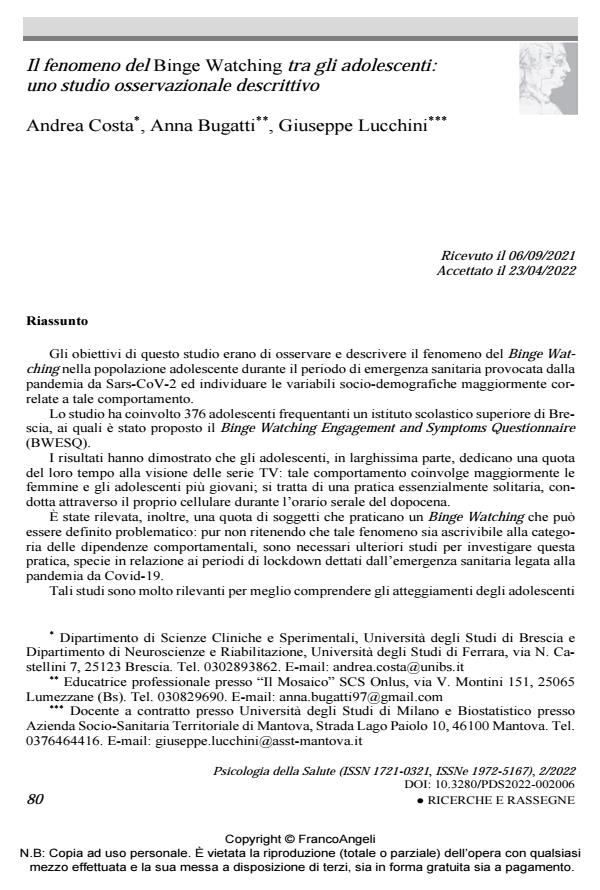The phenomenon of Binge Watching among adolescents: an observational descriptive study
Journal title PSICOLOGIA DELLA SALUTE
Author/s Andrea Costa, Anna Bugatti, Giuseppe Lucchini
Publishing Year 2022 Issue 2022/2
Language Italian Pages 29 P. 80-108 File size 381 KB
DOI 10.3280/PDS2022-002006
DOI is like a bar code for intellectual property: to have more infomation
click here
Below, you can see the article first page
If you want to buy this article in PDF format, you can do it, following the instructions to buy download credits

FrancoAngeli is member of Publishers International Linking Association, Inc (PILA), a not-for-profit association which run the CrossRef service enabling links to and from online scholarly content.
The present study aimed to observe and describe the phenomenon of Binge Watching among the adolescent population during the health emergency period caused by the SARS-CoV-2 pandemic and to identify the socio-demographic variables which are most correlated to this behavior. The study involved 376 adolescents attending a secondary school in Brescia, to whom was administered the Binge Watching Engagement and Symptoms Questionnaire (BWESQ). The results showed that the majority of adolescents dedicate a portion of their free time to watching TV series: this behavior mainly involves females and young adolescents; it is a typi-cally solitary hobby, pursued through the mobile phone during the evening hours, after dinner. In addition, a certain number of subjects who practice a problematic Binge Watching was found: although we do not believe that this phenomenon is attributable to the cluster of behavioral addictions, further studies are needed to investigate this practice, especially in relation to the lockdown periods linked to the Covid-19 pandemic. Such studies are particularly relevant to better understand the attitudes of adolescents to-wards digital media - especially TV series - and to promote effective education plans that limit abusive behaviors.
Keywords: adolescents, Binge Watching, TV series, behavioral addictions.
Andrea Costa, Anna Bugatti, Giuseppe Lucchini, Il fenomeno del Binge Watching tra gli adolescenti: uno studio osservazionale descrittivo in "PSICOLOGIA DELLA SALUTE" 2/2022, pp 80-108, DOI: 10.3280/PDS2022-002006